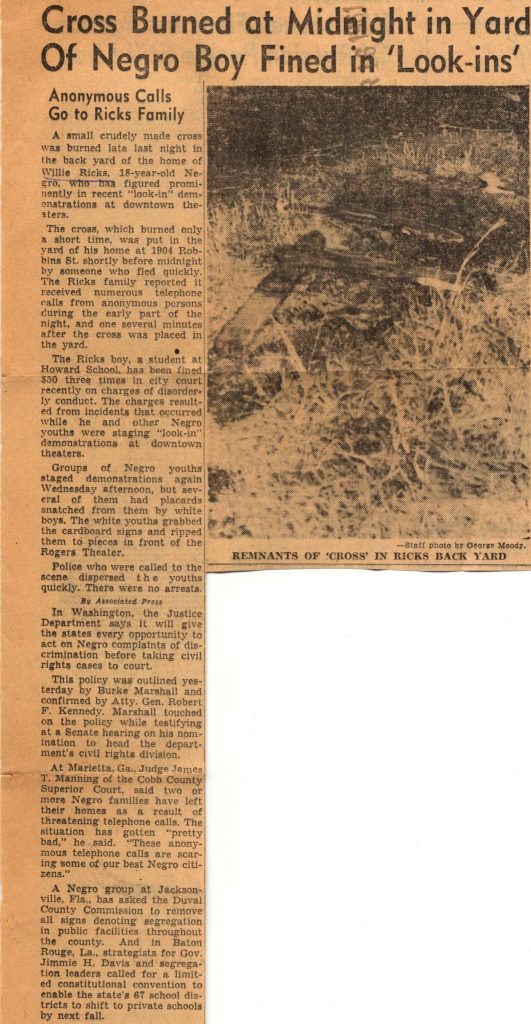This blog post was authored by Kristen Woodall, a student in Professor Eckelmann Berghel’s HIST 3475: Modern Civil Rights Struggle class that curated an exhibit on display in the George Connor Special Collections Reading Room, located in room 439 of the University of Tennessee at Chattanooga Library in Spring 2019.

Over the course of this semester, I have had the opportunity to work with the UTC Special Collections as part of the coursework for The Modern Civil Rights Movement. Each student was given the task of working in small groups to research and analyze archival materials in order to construct a historical exhibit on civil rights activism in Chattanooga. The group I chose to work with, Freedom’s Little Lights, focused on youth activism. I went into this project with no archival research experience and minimal awareness of the significance of historical documents. However, through engaging in the research process, I have gained an appreciation for the abundant archival material UTC Special Collection’s makes available to not only the UTC community and associated scholars, but all Tennesseans. Working with these resources, I’ve gain an understanding about the importance of utilizing primary and secondary sources in order to educate scholars as well as the general public on aspects of Chattanooga’s rich history that otherwise be overlooked.
While exploring the resources discussing Chattanooga’s local youth activism, my group came across a plethora of newspaper articles and photographs featuring Howard High Students. As our exhibit illustrates, these students were the heart of the local youth movement. They participated in sit-ins, look-ins and other successfully organized protests in order to express their frustrations with the race relations of the time and work to redefine them. While analyzing photos and articles, we learned about the many leaders of Chattanooga’s movement. One of the individuals that stood out to us in particular was Willie Ricks. As our panel explains, Ricks was a student at Howard High who played a prominent role in the local movement. Further, he went on to be a key member of the Student Nonviolent Coordinating Committee and a purveyor of the later Black Power Movement. Ricks also participated in the Meredith March of 1966 alongside prominent civil rights leaders such as Dr. Martin Luther King.
The newspaper article “Cross Burned at Midnight in Yard of Negro Boy Fined in ‘Look-Ins” addressed Willie Ricks’s confrontation with white resistance. The then-eighteen-year-old Howard High student had recently been charged a fine of fifty dollars by the city court for disorderly conduct. This fee was a penalty for his participation in the “look-in” demonstrations conducted by local youth activists at downtown theaters. He was not only involved in the demonstrations, but, in fact, played a leading role in organizing and facilitating them.
Unfortunately, members of the local white resistance noticed his prominence. The Ricks family received numerous anonymous phone calls during all the hours. Eventually, white supremacists placed a burning cross in the family’s backyard. The newspaper made no mention of law enforcement involvement. The newspaper indicated that the cross had been placed by someone who “fled quickly.” Increasing secrecy of racialized violence illustrated a shift in the nature of white resistance which was fleeting and concealed by the night in this instance.
This historical document archived in the UTC Special Collections provides a deeper understanding of Chattanooga’s youth activism during the Civil Rights Movement. Willie Ricks exemplified the fervor young activists possessed as they boldly voiced their opinions at the risk of being met with resistance by those who opposed integration. Being exposed to this information offers scholars and the local public a glimpse into the perilous environment in which African American youth activists courageously fought for social change in Chattanooga.